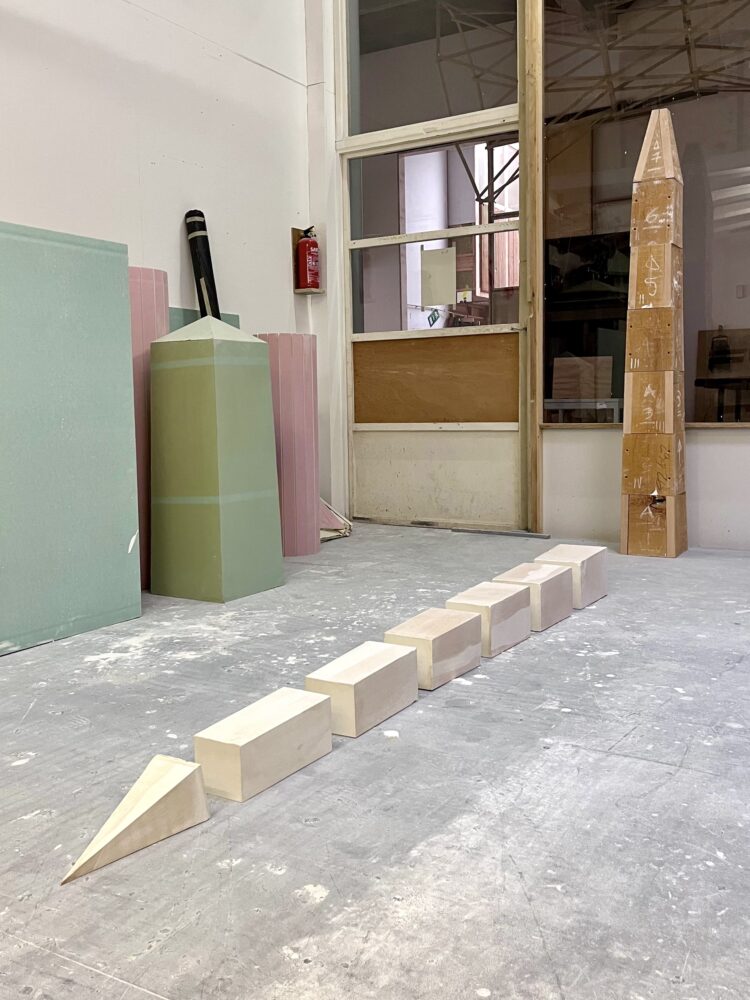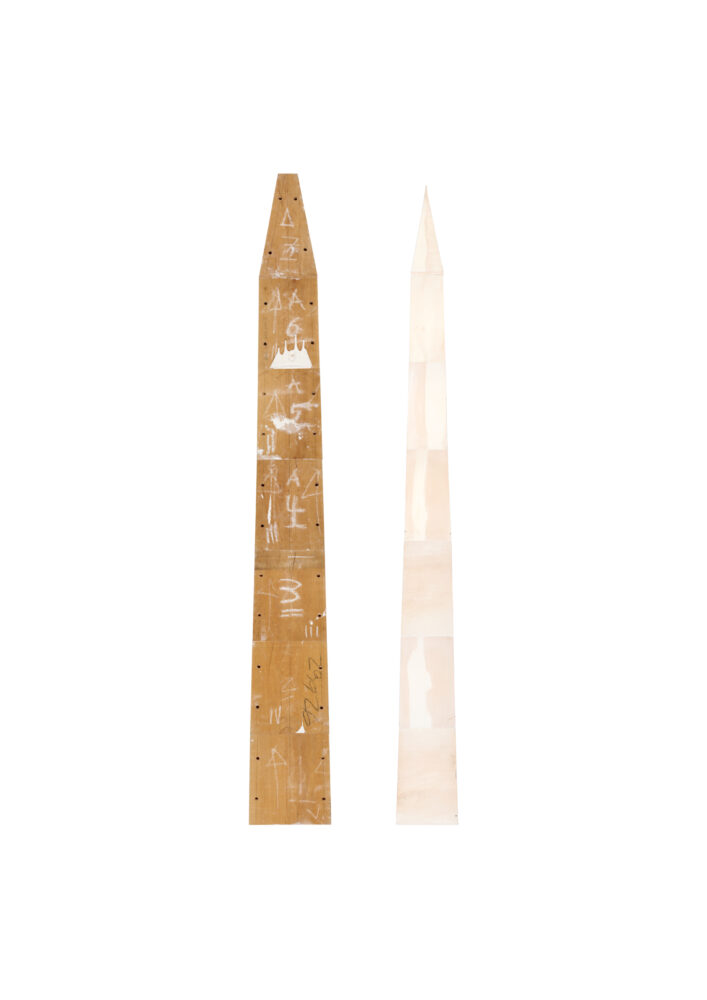Unfinished obelisk


An obelisk is so shaped because it is a sculpted ray of sunlight. Ancient Egyptians created them in pairs with the exception of the singular Lateran obelisk, now the largest example still standing in spite of its collapse and eventual reassembly four metres shorter. In a quarry at Aswan, southern Egypt, is a cracked and incomplete obelisk that was abandoned owing to fissures destabilising the granite from which it was carved – its pyramidion never reached the sky, instead remaining part of the earth.
Unfinished obelisk is an incomplete sculptural translation of both monuments, scaled from their celestial 32 metres down to an anthropic 1.88 metres. From this, construction drawings were developed for a cast plaster obelisk and alder-wood mould whose seven parts hint at a mathematically ‘perfect’ obelisk – the diagonal across the base being perfectly equal to one seventh of the total structural height. These divisions also serve to fracture one funerary monument into multiple sculptures, commemorating one death in a divisible memorial whose constituent parts always retain a fundamental relationship to one another and to one whole. Unfinished obelisk consequently eschews stability and monumentality in favour of something more imperfect and far more human.
Unfinished obelisk print edition
A limited edition print of Unfinished obelisk is available which includes 1:1 scale photographs of the first seven plaster casts and both the inside and outside of their alder-wood moulds. The edition also includes an expanded artist's text on the obelisk's relationship with language, materiality, death and love. Printed in a limited run of 28, each edition is finished in a handmade presentation box.
A YouTube video previewing the whole edition is available here.
Editions are available to purchase, please email for details


